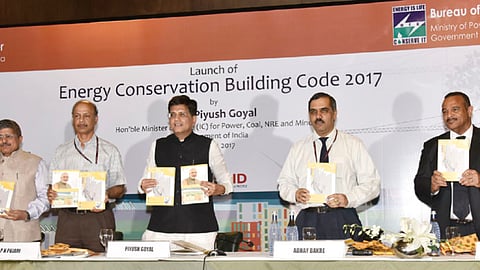

India has launched the Energy Conservation Building Code (ECBC) 2017 to push for a 50% reduction in energy use by 2030. The code includes energy performance standards for new commercial buildings to be constructed across the country.
Builders, designers and architects will need to integrate renewable energy sources into building design with the use of 'passive design strategies'. The aim is to achieve energy neutrality in commercial buildings.
"I would like to dedicate ECBC Code 2017 to all the young children of India (and) to the future of India for whose sake," said Piyush Goyal, Minister of State (IC) for Power, Coal, New and Renewable Energy and Mines during the launch event of the report. Adding,"It is incumbent on all of us to efficiently utilize every bit of resource, ensure implementation of progressive and forward looking programmes of Government very diligently and ensure that we will leave behind for next generation a better world than what we inherited," said Piyush Goyal, Minister of State (IC) for Power, Coal, New and Renewable Energy and Mines while launching the same.
The new code was developed by the Ministry of Power and Bureau of Energy Efficiency (BEE). Technical support came from the United States Agency For International Development (USAID) under the US-India bilateral Partnership to Advance Clean Energy-Deployment Technical Assistance (PACE-D TA) Program.
Buildings would need to demonstrate minimum energy savings of 25% to be considered ECBC-compliant. They can get ECBC Plus of Super ECBC tag if they show energy savings of 35% and 50%, respectively.
With the ECBC in place, the administration aims to achieve a 50% reduction in energy use by 2030. This would mean energy savings of about 300 billion kWh by the target year and peak demand reduction of over 15 GW per year. All this should translate into expenditure savings of 350 billion INR ($5.43 billion) and CO2 reduction of 250 million tons.
.png?w=50&fm=png)